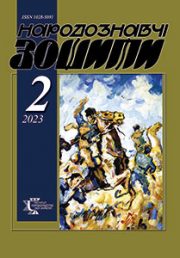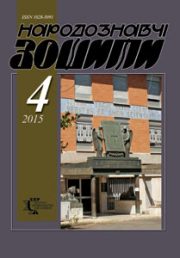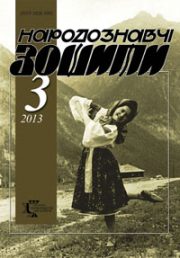The Ethnology Notebooks. 2023. № 1 (169), 181—192
UDK [271.2-526.62-523.47-562:39](477.86-2)”16″
DOI https://doi.org/10.15407/nz2023.01.181
LESIV Andriy
- ОRCID.ID: http://orcid.org/0000-0002-3408-7496
- Ph.D, Senior Research Scholar,
- Department of Art History,
- The Ethnology Institute UNAS,
- Svobody Avenue 15, 79000, Lviv, Ukraine,
- Contacts: e-mail: lesiv@nas.gov.ua
Abstract. Statement of the problem and relevance of the research. Analysing the genesis and stylistic evolution of the iconography of the iconostases in Ukrainian churches, we cannot ignore several icons dedicated to the main Christian holidays of the liturgical year — the Great Feasts. These icons are characterized by their multicultural background and are a valuable source for the researchers’ humanities studies in history, theology, art history, cultural studies, social anthropology, and other scientific fields. A wide range of potential scientific interest, as well as the specifics of the evolution and development of the holidays’ iconography at the junction of Western and Eastern Christian canonical traditions determine the relevance of this study.
The purpose of the article is to analyse the main and unique features of the iconography and symbolism of the Great Feasts in the context of sacred painting in Galicia during the late Renaissance. The object of the study is the characteristic features of the iconography of the Festive Row of the iconostasis, the symbolism of the images’ interpretation, its artistic and stylistic features. The subject of the study is the twelve icons of the Great Feasts from the iconostasis of the Church of the Descent of the Holy Spirit in Rohatyn. The methodological basis of the study is grounded on the historical and artistic analysis of the depicted Christian images from the point of view of their evolving at the junction of two Christian traditions — eastern and western, penetration of secular motifs into canonical sacred motifs.
The Festive Row in the Byzantine iconostasis was formed in the 10th—11th centuries. In its essence, it is an iconographic cycle of feasts dedicated to the most important events from the life of Christ and the Mother of God. The Great Feasts cycle was formed after the approval and codification of the church calendar. In Ukrainian iconostases of the 17th century (the oldest intact and unchanged iconostases) festive icons were placed in the order of the calendar year, starting from September 1st, in the direction from north to south.
As a result of the research, based on the example of the icons from the Rohatyn Church of the Descent of the Holy Spirit, the characteristic features of the Great Feasts iconography of the mid-17th century, the fusion and incorporation of motifs from the secular life of that time, in particular, the image of the people’s every day’s life, interior and exterior decoration, clothes, etc were identified and outlined.
Keywords: iconography, iconostasis, The Great Feasts Row, The Twelve Great Feasts.
Received 19.12.2022
REFERENCES
- Svientsitska, V., & Sydor, O. (1990). A legacy of the ages. Ukrainian painting of the 14th—18th centuries in the museum collections of Lviv (Pp. 7—19).Lviv [in Ukrainian].
- Ovsijchuk, V., & Krvavych, D. (2000). A story about the icon. Lviv [in Ukrainian].
- Taranushchenko, S. (1994). Ukrainian iconostasis. Notes of the Scientific Society named after Taras Shevchenko (Vol. CCXXVII: works of the art history section). Lviv: the Scientific Society named after Taras Shevchenko [in Ukrainian].
- Melnyk, V. (1991). The Church of the Descent of the Holy Spirit in Rohatyn. Kyiv [in Ukrainian].
- Lozinski, W. (1960). Right and Left. Customs in Red Ruthenia in the first half of the 17th century. (Vol. 1). Cracow. [in Polish]
- Polishchuk, N. The Entry of the Blessed Virgin Mary into the Temple in the ancient Ukrainian iconography. (Published: 02.12.2016). Retrieved from: https://risu.ua/vvedennya-u-hram-presvyatoji-bogorodici-v-davniy-ukrajinskiy-ikonografiji_n82378 [in Ukrainian].
- Fedak-Helytovych, M. Resurrection (Descent into Hell) in the Ukrainian iconography. (Published: 14.04.2021). Retrieved from: https://risu.ua/voskresinnya-gospodnye-zishestya-v-ad-v-ukrajinskiy-ikonografiji_n56051 [in Ukrainian].
- Polishchuk, N. Iconography of The Dormition of the Blessed Virgin Mary: to be in the hands of God. (Published: 28.08.2015). Retrieved from: https://risu.ua/ikonografiya-uspennya-presvyatoji-bogorodici-buti-v-rukah-bozhih_n75811 [in Ukrainian].







